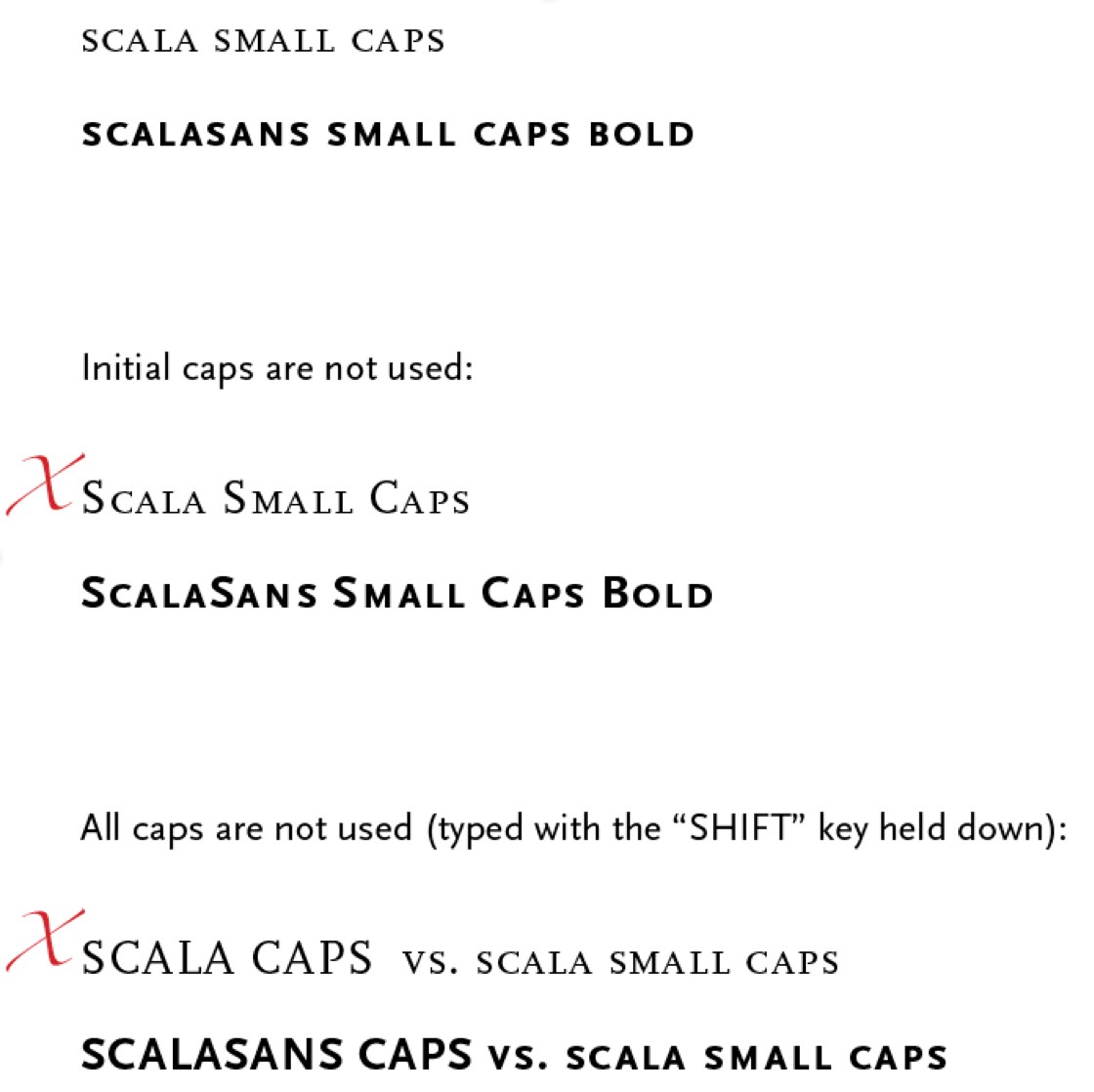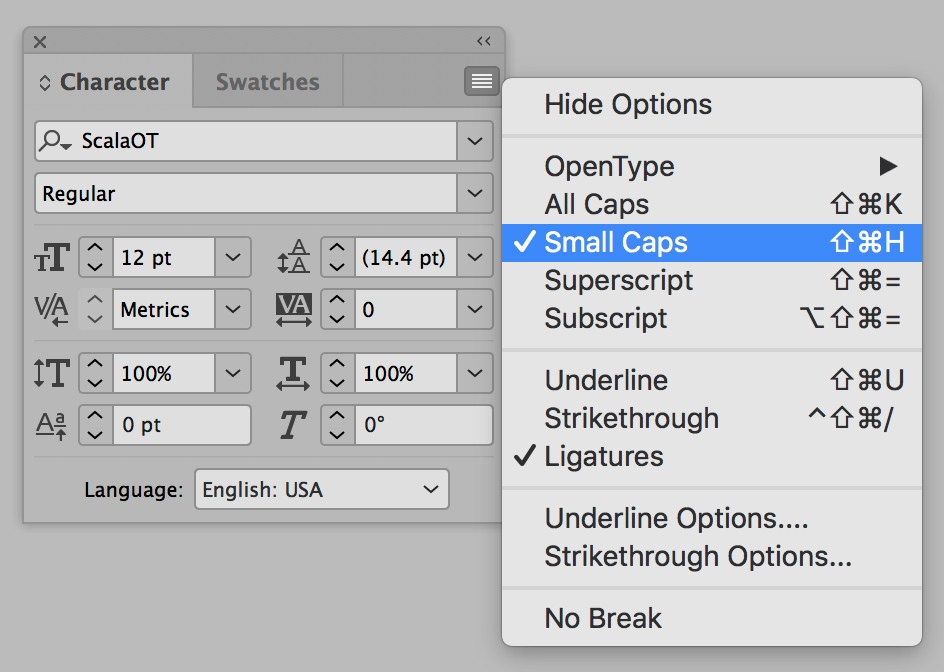Boston College Fonts and Typography
Typography is the element of a graphic identity system that gives it its life force. Good typography suggests health, vitality, quality, and character. The particular character represented by the choice of typefaces helps to define the University. Typography is the clearest and most efficient way for an institution to communicate a sense of self.
Scala is Boston College’s official typeface (beginning in the late 1990s). Based on humanist Renaissance typefaces, Scala reflects the generally Western origins of the modern academy, as well as the particularly Roman Catholic influences upon these origins. This typeface is meant to be emblematic of a long tradition of intellectual engagement and rigorous scholarship.
Licensed copies of Scala and Scala Sans in OpenType format are available from the Office of University Communications. These copies are for the use of University faculty and staff producing publications that represent the University. (At this time, Scala fonts are not available for use on University websites. See the section on web typography.)
To obtain a copy, please call us at 617–552–4820 or e-mail univcommunications.contact@bc.edu.
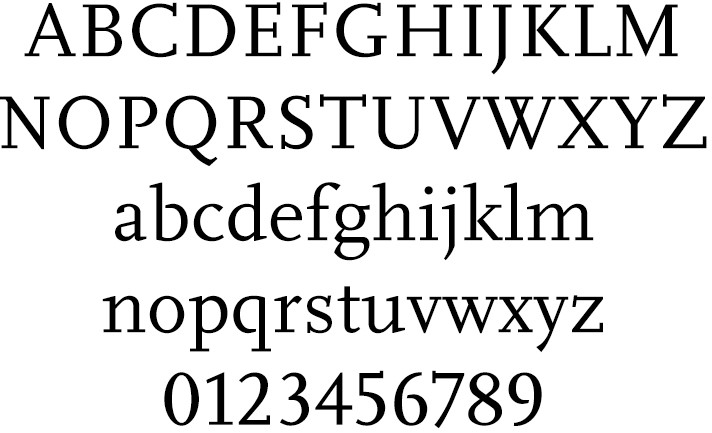
Scala Regular
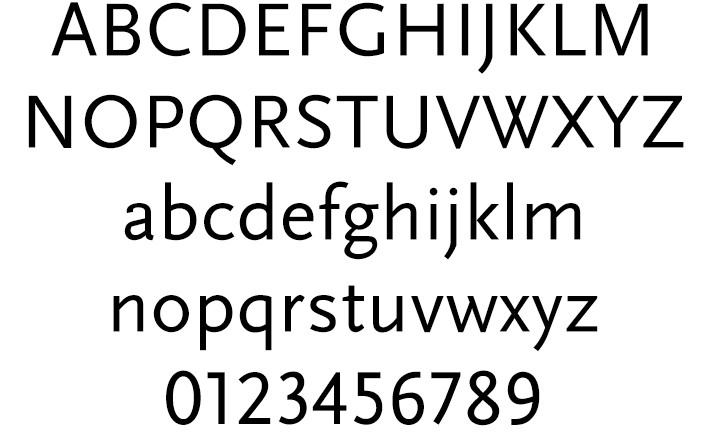
Scala Sans Regular
Available Scala Font Familes
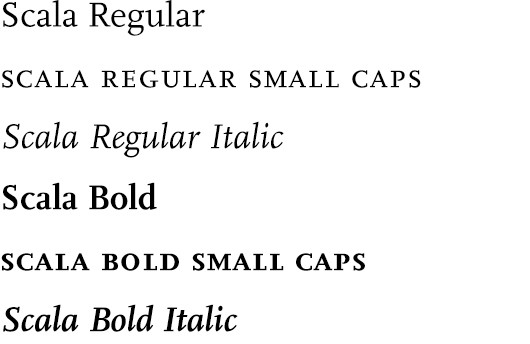
Scala
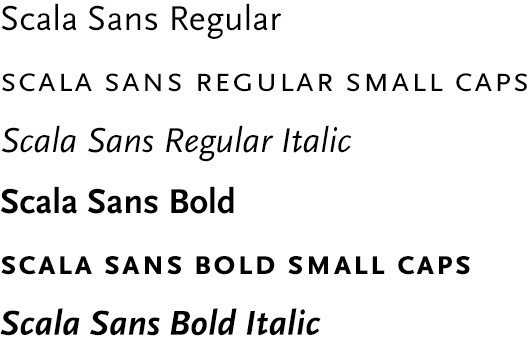
Scala Sans
Tracking Values
Tracking refers to uniformly increasing or decreasing the horizontal spacing between a range of characters. Most often used to adjust and fine-tune overall letterspacing, tracking can create more readable, pleasing color and texture. Certain tracking values should be used with the Scala typeface within the Boston College identity system to improve readability and appearance.
The list below contains recommended tracking values for Adobe InDesign for each of the Scala family fonts. When using small caps, the tracking values can be adjusted when the typeface is used at very large sizes in order to maintain the proper proportional relationships.
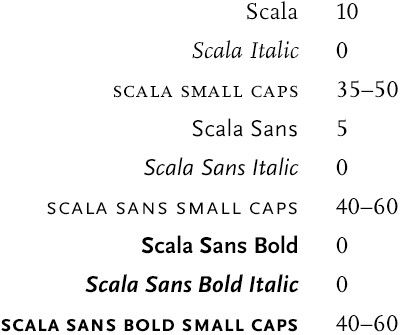
Small Caps / All Caps
The Scala or ScalaSans typeface can also be used as small caps. Small caps should be created using the small caps treatment within the design software. This can be achieved in InDesign in two ways, either using the “Small Caps” icon in the type toolbar, or by the OpenType “All Small Caps” option in the character tab.
Boston College style does not set words in all standard caps, neither are initial caps (combination of large and small caps) used.
